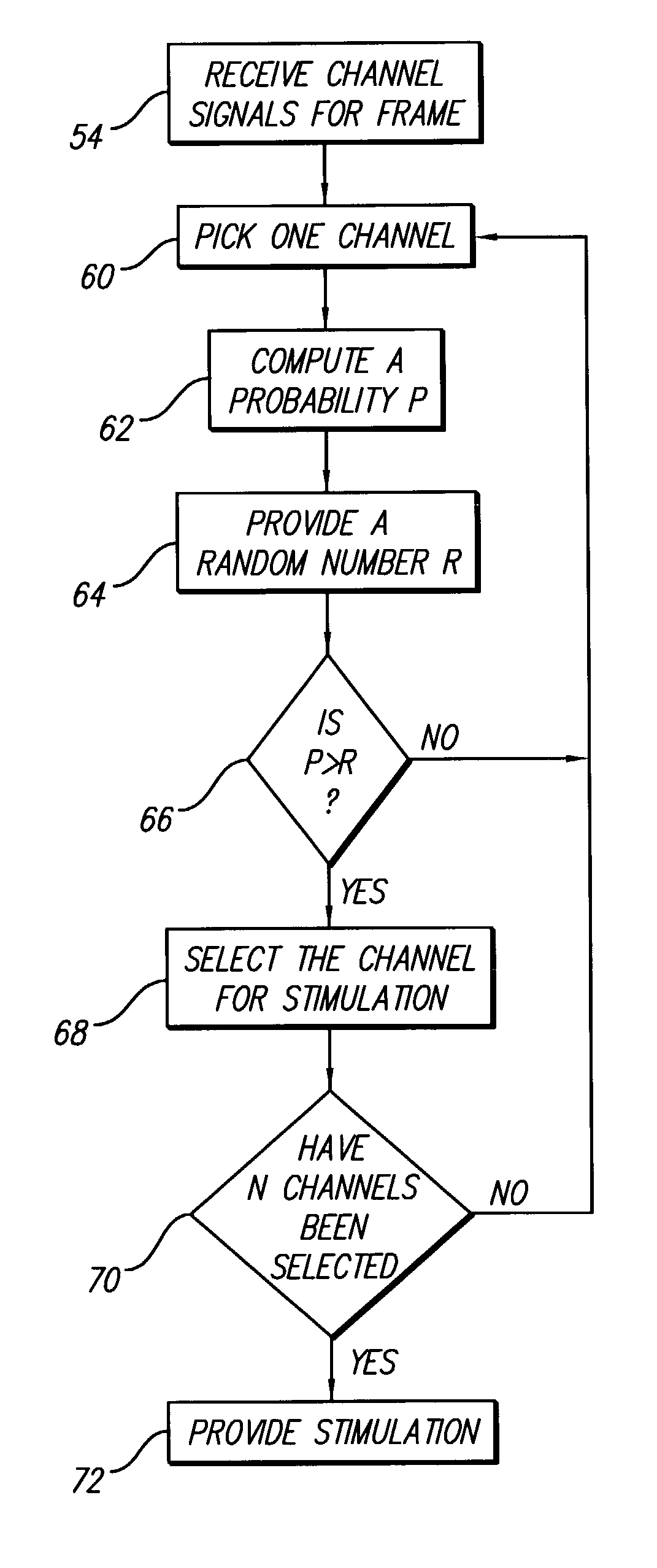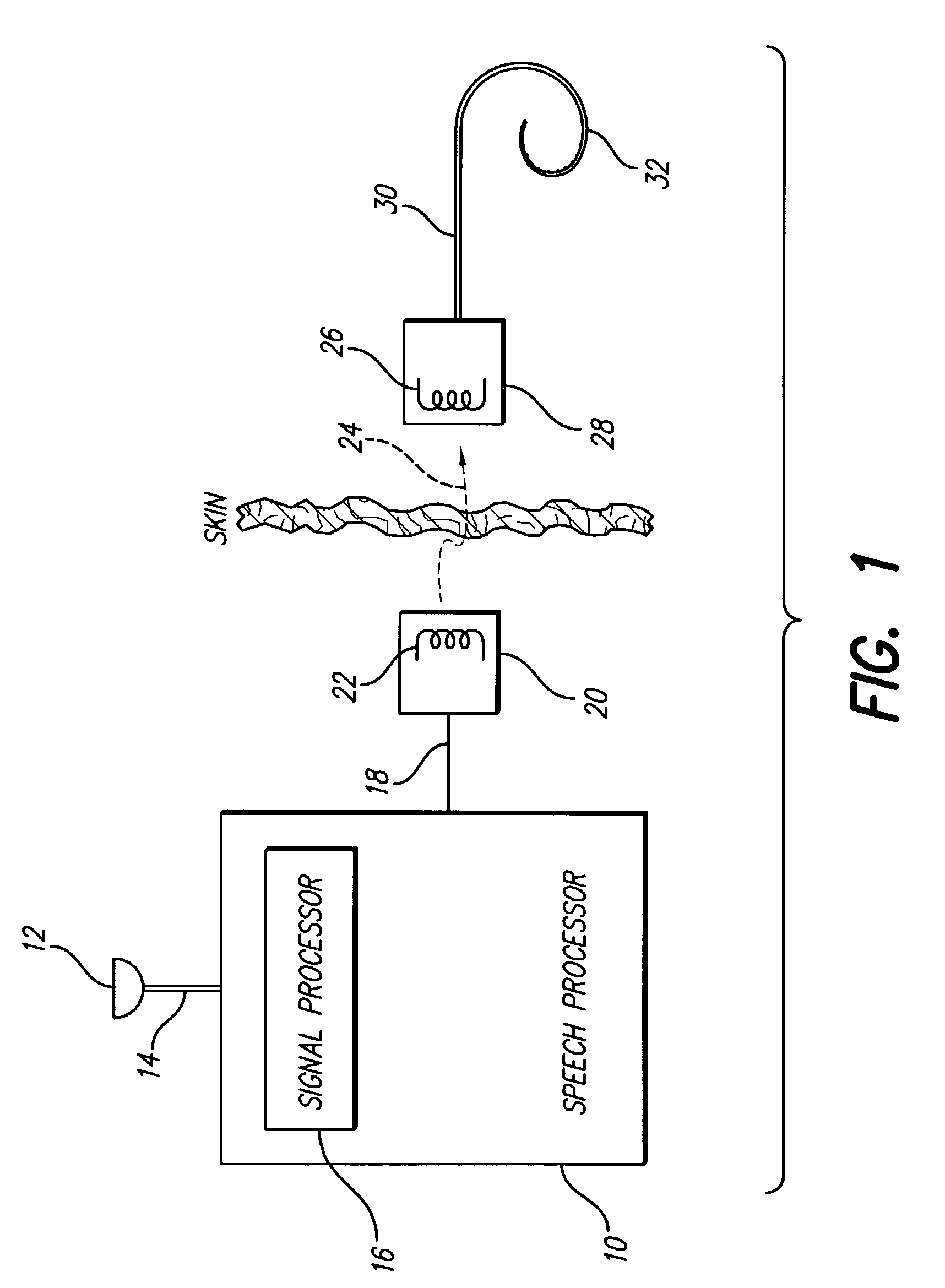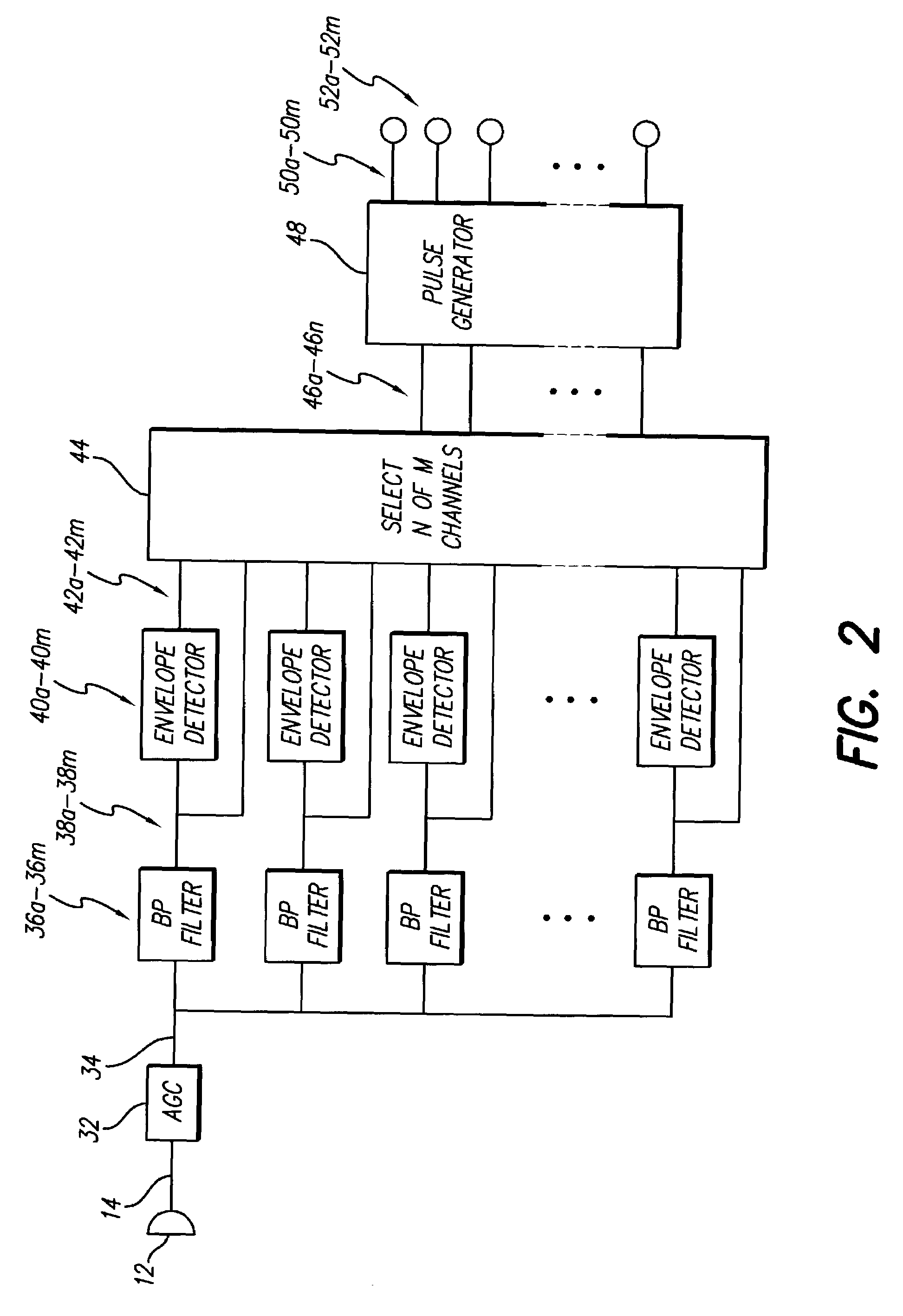Pulse skipping strategy
a cochlear stimulation and pulse technology, applied in electrotherapy, therapy, etc., can solve the problems of conductive hearing loss, impeded normal mechanical pathways for sound to reach the hair cells in the cochlea, deafness is sensorineural hearing loss, etc., to prolong the battery life of the scs system, reduce processing requirements, and save processor resources
- Summary
- Abstract
- Description
- Claims
- Application Information
AI Technical Summary
Benefits of technology
Problems solved by technology
Method used
Image
Examples
first embodiment
[0033]an improved pulse skipping strategy includes the use of a discrete probability function. An example of a probability function for a strategy where N=6 and M=16 is shown in FIG. 3. The probabilities of the 16 channels are scaled so that the sum of the probabilities of the 16 channels is 6. As a result, the average probability in this example is 6 / 16. The 16 channels are compared to random numbers from a uniform distribution between zero and one, one channel at a time. For example, if a channel has a scaled probability of 0.85, and the random number provided for the comparison is less than 0.85, the channel will be selected for stimulation (i.e., the channel will be selected 85% of the time.) Similarly, a channel with a probability of 0.10 will be selected 10% of the time. The random numbers are unique for each comparison, and may be obtained through table look-up, a random number generator, or from some other method of obtaining random numbers. Any method of obtaining the rando...
second embodiment
[0042]In the present methods and systems, a relatively simple alternative to known N-of-M strategies is utilized that comprises comparing the channel signal amplitudes with a first threshold. In each frame, all the amplitudes are compared with the first threshold. Channels with amplitudes above the first threshold are selected for stimulation. The first threshold is not constant, and may be adjusted after every frame. If more than N channels are above the first threshold in a frame, the first threshold used for the next frame is raised by a certain amount. If less than N channels are above the first threshold, the first threshold used for the next frame is lowered by a certain amount. In this way, the first threshold is dynamically adjusted to a point where an average of N channels will be selected for stimulation per frame.
[0043]However, because there is no guarantee that exactly N channels will meet this criteria during any given frame, a method is required to adjust the channel s...
third embodiment
[0049]A flow chart of the third embodiment is shown in FIG. 7. As seen in FIG. 7, for each frame of data, the channel signals are received (block 110). A second threshold is next provided (block 112) that is either a stored initial value of the second threshold, or the second threshold recursively computed (as explained below). A loop is then entered which is executed once for each channel. Upon entering the loop, a channel is picked (block 114) that has not been tested for selection during the present frame. The picked channel includes an amplitude, which is computed as one of several possible measures of the amplitude of the signal on the picked channel, and may include an envelope signal. An adjusted amplitude is then computed (block 116) as the amplitude of the picked channel minus the second threshold (in dB). The adjusted amplitude is then mapped into a probability “P” (block 118) using an appropriate mapping scheme, such as the mapping relationship shown in FIG. 6. A random n...
PUM
 Login to View More
Login to View More Abstract
Description
Claims
Application Information
 Login to View More
Login to View More - R&D
- Intellectual Property
- Life Sciences
- Materials
- Tech Scout
- Unparalleled Data Quality
- Higher Quality Content
- 60% Fewer Hallucinations
Browse by: Latest US Patents, China's latest patents, Technical Efficacy Thesaurus, Application Domain, Technology Topic, Popular Technical Reports.
© 2025 PatSnap. All rights reserved.Legal|Privacy policy|Modern Slavery Act Transparency Statement|Sitemap|About US| Contact US: help@patsnap.com



